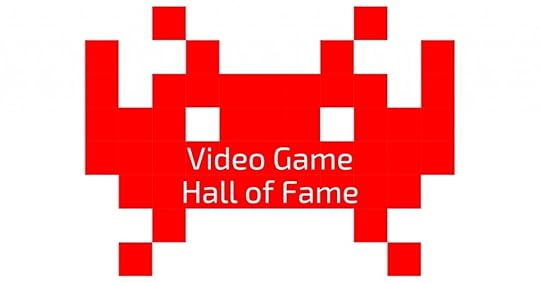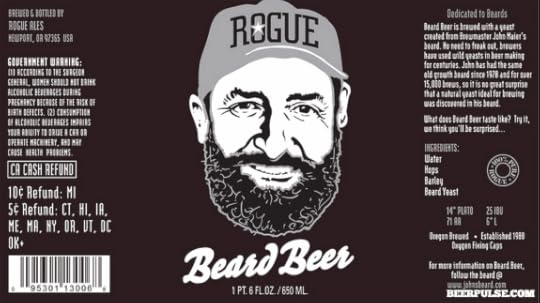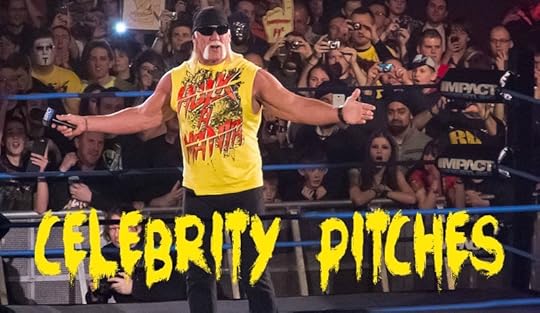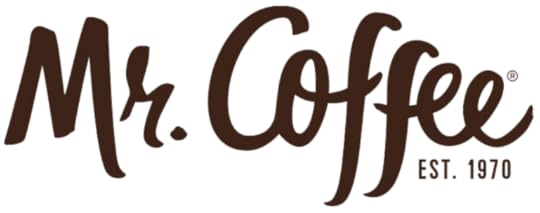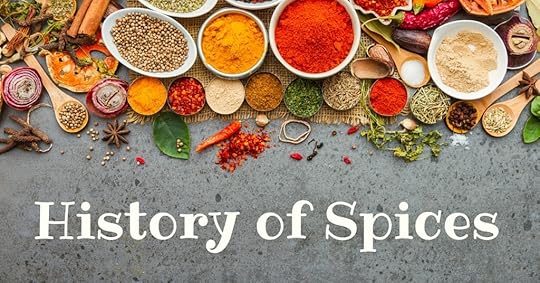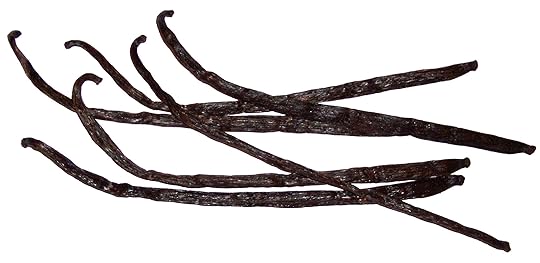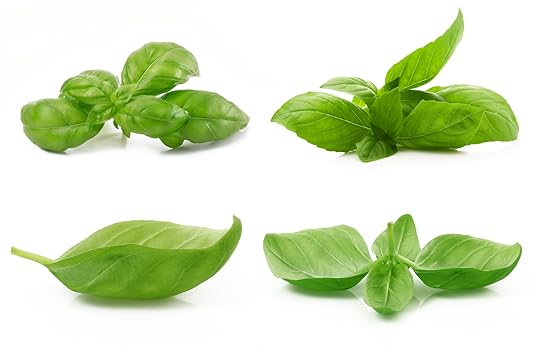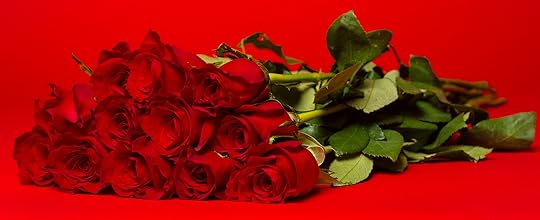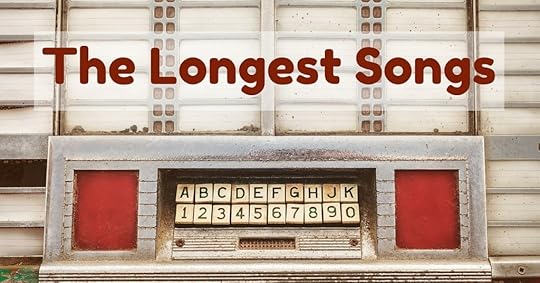Bathroom Readers' Institute's Blog, page 83
June 1, 2016
The Video Game Hall of Fame
Today most video games are played in the home, but in the 1970s and 1980s, if you wanted to play the newest, hottest games, you went to an arcade. Here are the stories of a few of the classics we played back in the golden age of arcade games.
SPACE INVADERS (Taito, 1978)
Object: Using a laser cannon that you scroll back and forth across the bottom of the screen, defend yourself from wave after wave of aliens descending from the top of the screen.
Origin: Space Invaders started out as a test that was used to measure the skill of computer programmers, but someone decided that it might also work well as an arcade game. They were right—the game became a national craze in Japan. Introduced to the U.S. market by Midway in October 1978, Space Invaders became the biggest hit of the year. It made so much money—a single unit could earn back its $1,700 purchase price in as little as four weeks—that it helped arcade games break out of arcades and smoky bars into nontraditional venues like supermarkets, restaurants, and movie theater lobbies.
TEMPEST (Atari, 1981)
Object: Shoot the moving shapes—red brackets, green spikes, yellow lines, and multicolored balls—before they climb up and out of the geometrically shaped “well” they’re in and get you.
Origin: Atari game designer Dave Theurer needed an idea for a new video game, so he went to the company’s book of potential themes compiled from brainstorming sessions. The idea he chose to develop was “First Person Space Invaders”—Space Invaders as seen from the perspective of the laser cannon at the bottom of the screen. Theurer created a game and showed it to his superiors…and they told him to dump it unless he could “do something special with it.” Theurer told them about a nightmare he’d had about monsters climbing out of a hole in the ground and coming to get him. “I can put it on a flat surface and wrap that surface around to make a cylinder, and rotate the cylinder,” Theurer suggested. As he conceived it, the cylinder would move while the player stood still…but he abandoned that idea when the rotating cylinder started giving players motion sickness. “I switched it so the player moved around,” Theurer says. “That fixed it.”
LEGENDARY FLOP: LUNAR LANDER (Atari, 1979)
Object: Find a flat spot on the lunar surface and use your booster engines to slow your spaceship (without running out of fuel) and land it safely on the moon.
Origin: The game was adapted from a computer simulation used in college physics courses to teach students about lunar gravity. Atari had high hopes for the game, even designing a special two-handled lever that controlled the booster engines. It flopped. So did the special lever: “Springs on the lever made it snap back in place when it was released,” Steven Kent writes in The Ultimate History of Video Games. “Unfortunately, some younger players got their faces too close to the lever, resulting in complaints about children being hit in the face.”
PAC-MAN (Namco, 1980)
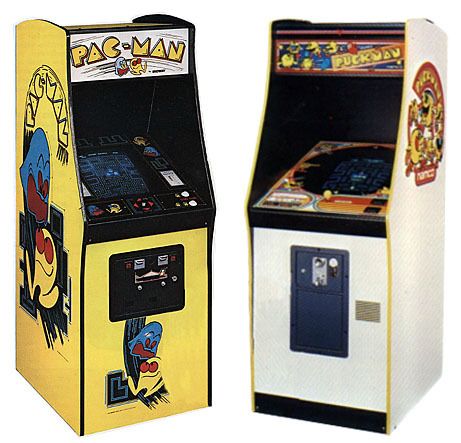
Object: Maneuver Pac-Man through a maze and eat all 240 dots without getting caught by one of the four “ghosts”—Inky, Blinky, Pinky, and Clyde.
Origin: In 1979 a game designer named Toru Iwatani decided to make a game that would appeal to women, who were less interested in violent, shoot-the-alien games like Space Invaders. Iwatani thought that eating things on the computer screen would make a good nonviolent alternative to shooting them. He came up with the idea for the Pac-Man character over lunch. “I was having pizza,” he says. “I took one wedge and there it was, the figure of Pac-Man.” Well, almost: Pac-Man was originally supposed to be called Puck- Man, because the main character was round like a hockey puck…but the name was changed to Pac-Man because Namco officials “worried about American vandals changing the ‘P’ to an ‘F’.”
DONKEY KONG (Nintendo, 1980)
Object: Save the girl from the giant ape.
Origin: One of Nintendo’s first video games was a Space Invaders knockoff called Radarscope. It flopped in the United States, nearly bankrupting the distributor—who wanted to stop doing business with Nintendo. What could Nintendo do? They promised to ship new chips to American distributors so the unsold Radarscope games could be turned into new games. There was just one problem—they didn’t have any new game chips. So Nintendo president Hiroshi Yamauchi told the company’s staff artist, Shigeru Miyamoto, to come up with something fast. Miyamoto had never made a game before, and he hated tennis games, shooting games, and most games that were popular at the time. So he invented a game about a janitor who has to rescue his girlfriend from his pet ape, who has taken her to the top of a construction site. Miyamoto wanted to name the game after the ape, so he looked up the words for “stubborn” and “ape” in his Japanese/
English dictionary…and found the words “donkey” and “Kong.” Donkey Kong went on to become one of the most successful video games in history, giving Nintendo the boost it needed to build itself into a multibillion-dollar company and an international video game juggernaut. And it might never have happened if Radarscope hadn’t failed.
DEFENDER (Williams Electronics, 1980)
Object: Use your spacecraft to shoot hostile aliens while saving humanoids from being kidnapped and turned into mutants.
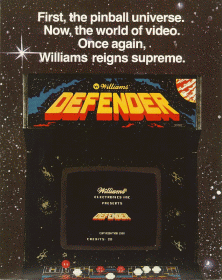
Origin: Another game helped along by a dream: Defender was supposed to make its debut at the 1980 Amusement & Music Operators of America (AMOA) convention, but less than two weeks before his deadline, creator Eugene Jarvis had only the rough outlines of a game—the name “Defender” and a spaceship attacking aliens, all against a planetary backdrop dotted with humanoids who didn’t really do anything. What was the defender defending? “The answer came to him in a dream,” Nick Montfort writes in Supercade. “Those seemingly pointless little men, trapped on the surface below, they were the ones to be defended.” Jarvis made his deadline, but the AMOA was afraid the game was too complicated. They were wrong. Defender became one of the most popular games of the year and made so much money that in 1981 the AMOA voted it Video Game of the Year.
The post The Video Game Hall of Fame appeared first on Trivia Books and Facts | Uncle John's Bathroom Reader.
June is Bathroom Reading Month Giveaway
Welcome to another amazing June is Bathroom Reading Month giveaway. It’s true that we have a love for reading in the bathroom year-round. But, June is when we can celebrate it with all of our fans. For our grand prize this year, we are thrilled to offer an entire set of Uncle John’s Bathroom Readers currently in print. That is more than 80 BOOKS!
Entering is easy. There is no need to dance with a star, survive on a deserted island, or do math problems. You simply need to sign up for our irregular email newsletter below. If you are already an email subscriber, filling out the form will still count as your contest entry. However, we promise not to send you duplicate emails to the same email address. Also, earn additional entries for sharing the giveaway with your friends online.
Grand Prize:
A complete library of in-print Uncle John’s Bathroom Readers
5 Runner Up Prize:
An Uncle John’s Bathroom Reader of choice
Bathroom Reading Month is when we thank our loyal fans by hosting giveaways. Check our Facebook page weekly for other fun giveaways of Uncle John’s books throughout the month of June.
We wish you all the best of luck!
The post June is Bathroom Reading Month Giveaway appeared first on Trivia Books and Facts | Uncle John's Bathroom Reader.
May 31, 2016
3 Beers for Only the Truly Adventurous Beer Aficionado
Father’s Day will be here before you know it. Is your dad a beer guy? Get your shopping done early and order up Beer-Topia in our store. It’s full of stories and pieces like this one.
Beard Beer
Yeast can thrive in a lot of places on the body where it’s dark and warm. The belly button sure, but also in beards. John Maier is the head brewer at Rogue Brewery and he’s got a very long, very thick beard. He cut off nine strands, sent it to a yeast laboratory (there is such a thing) called White Labs for testing, and it came back positive. That sample was thoroughly cultivated and is now the source of the yeast used in Rogue’s Beard Beer. It’s one of the most popular offerings on tap at the brewery’s tasting room in Newport, Oregon.
Belly Button Beer
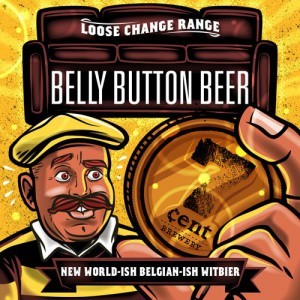 Beer only requires a precious few ingredients: water, malt, a flavoring agent like hops, and yeast, which consumes the sugar in the malt to produce alcohol (and bubbles). But that yeast can come from anywhere. Australian beer company 7 Cent Brewery got theirs from just about the last place anyone would want to get theirs: employees’ belly buttons. Belly Button Beer is “perhaps the first beer in the world fermented from yeast captured from the brewer’s belly button fluff.” After cultivating the collected yeast on agar plates, the yeast was used to make three different beers, with the “best tasting” one released to the public. (They also added orange zest and coriander seeds, so the belly button essence is reportedly difficult to really taste.)
Beer only requires a precious few ingredients: water, malt, a flavoring agent like hops, and yeast, which consumes the sugar in the malt to produce alcohol (and bubbles). But that yeast can come from anywhere. Australian beer company 7 Cent Brewery got theirs from just about the last place anyone would want to get theirs: employees’ belly buttons. Belly Button Beer is “perhaps the first beer in the world fermented from yeast captured from the brewer’s belly button fluff.” After cultivating the collected yeast on agar plates, the yeast was used to make three different beers, with the “best tasting” one released to the public. (They also added orange zest and coriander seeds, so the belly button essence is reportedly difficult to really taste.)
Collagen Beer
The problem with drinking too much beer: beer gut, among other unsightly possibilities. But what if beer could improve health…or at least improve skin health? That’s what Precious, a beer from Japan’s Suntory Holdings promises to do. Each can of the lager is laced with collagen, a naturally-occurring protein in the human body that keeps skin looking fresh, but which depletes as a person ages.
The post 3 Beers for Only the Truly Adventurous Beer Aficionado appeared first on Trivia Books and Facts | Uncle John's Bathroom Reader.
Weird Pitches
Lots of celebrities have endorsed products. Sometimes it helps sales. The George Foreman Grill, for example, has sold millions. Sometimes, on the other hand, it’s just a weird idea.
(1)
Wrestler Hulk Hogan lent his image to a line of cameras for kids. His face was painted on the lens, inserting Hulk into the corner of every photograph.
(2)
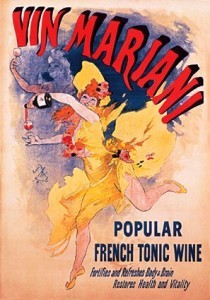
In the 1880s, Pope Leo XIII endorsed a “medicine” called Vin Mariani in newspaper ads. (It was really wine laced with cocaine.)
(3)
In 1994 Hong Kong TV station ATV used images of Adolph Hitler in print ads, claiming that Hitler would have been more “successful” had he advertised on ATV.
(4)
Today, Fred Flintstone and Barney Rubble appear in ads for Flintstones vitamins, but they once starred in TV ads selling Winston cigarettes.
(5)
Cybill Shepherd was hired by the Beef Industry Council in 1987 for the “real food for real people” campaign, despite Shepherd’s public admission that she was a vegetarian.
(6)
Teen star Hilary Duff endorsed a line of ottomans.
(7)
Joe Namath plugged Beautymist Panty Hose, which he claimed to have worn under his football uniform.
(8)
Ricardo Montalban, who once helped sell the Chrysler Cordoba (upholstered in “soft Corinthian leather”), also appeared in an infomercial for the Nativity Cross—a gold cross set with a stone said to be from a cave near Jesus’s birthplace.
(9)
In 1959 former First Lady Eleanor Roosevelt became the television spokesperson for Good Luck margarine.
(10)
Former Chicago Bears linebacker Dick Butkus made TV ads for the Kwik-Cook, a portable grill that burned newspapers for fuel. More football news: Bassett Furniture carries a line of furniture designed by former Denver Broncos quarterback John Elway.
The post Weird Pitches appeared first on Trivia Books and Facts | Uncle John's Bathroom Reader.
May 27, 2016
Call me Mister
Here, ladies and gentlemen, are the stories behind some well-known products (and one character) who prefer to be addressed as “Mister.”
Mr. COFFEE
In the 1968, Vincent Marotta and Sam Glazer, highschool friends who became partners in a small construction company, decided to start a coffee delivery service. Obsessed with finding a way for people to make better coffee at home, an idea came to Marotta while he was recuperating from brain surgery in 1970. His great idea: A self-contained unit that would heat the water to 200°F and drip it through the coffee grounds once, not over and over again, as was the standard “percolater” method at the time. He and Glazer then hired two ex-Westinghouse engineers to design the product, which he named Mr. Coffee. The product was a hit almost instantly, but Marotta wanted to go national. His other great idea: He hired his boyhood hero, Joe DiMaggio, as the company spokesman. It worked. Within three years, the company dominated the coffeemaker market, producing nearly 40,000 Mr. Coffees a day, with annual sales approaching $150 million. In 1987 Glazer and Marotta, who once referred to himself as “the Michaelango of coffee,” decided to sell the company, but the product—and Marotta’s big idea—still dominate.
Mr. CLEAN
“Mr. Clean will clean your whole house / And everything that’s in it / Mr. Clean, Mr. Clean, Mr. Clean…” Within six months of its introduction in 1958 by Proctor & Gamble (including that earworm TV jingle), Mr. Clean became America’s bestselling household cleaner. The Mr. Clean character was designed by a Chicago ad agency in 1957, but Procter & Gamble—perhaps to ward off lawsuits from Yul Brynner, who affected a very similar look as the king of Siam in a popular musical of the time, The King and I— insisted that the character was modeled after a Navy sailor from Pensacola. Internationally, his name is usually translated into the local language—Maestro Lindo in Italy, Don Limpio in Spain, Meister Proper in Germany, and Monsieur Net in Quebec.
Mr. BEAN
Rowan Atkinson, who created the 1990s British TV character, described Mr. Bean as a “boy trapped in a man’s body.” (Watch him try go shopping and you’ll see why.) Mr. Bean, who rarely speaks, was modeled after silent film stars as well as “Monsieur Hulot,” a bumbling character created by French director Jacques Tati in the 1950s. Atkinson debuted Mr. Bean at a French-only comedy festival in Montreal, Quebec, in 1987. Why? He wanted to see if non-English speakers would laugh at him. They did. The character didn’t even have a name when the show went in to production, but Atkinson just knew it had to be some kind of vegetable, and came close to calling him Mr. Cauliflower.
Mr. PiBB
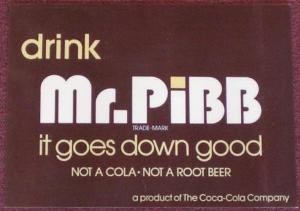 The Dr Pepper Company didn’t have its own bottling or distribution facilities, so it typically bid out the jobs to other soft drink companies, giving them a share of the company and profits in exchange. In some regions, Coca-Cola won the bid; in others, Pepsi or 7-Up did. Coke didn’t have distribution of Dr Pepper in the South, where it was most popular, so in the early ’80s Coke created a taste-alike brand and tested it in a few markets, most notably Waco, Texas, Dr Pepper’s hometown. This didn’t make the Pepper people happy, and the company sued when it discovered that Coke was calling its new drink “Peppo.” So Coke changed the name to “Dr. Pibb.” Still too close. (From a distance, the two lowercase b’s resembled p’s.) Finally, Coke revoked Pibb’s medical license and capitalized the two B’s, creating “Mr. PiBB,” which was just barely different enough.
The Dr Pepper Company didn’t have its own bottling or distribution facilities, so it typically bid out the jobs to other soft drink companies, giving them a share of the company and profits in exchange. In some regions, Coca-Cola won the bid; in others, Pepsi or 7-Up did. Coke didn’t have distribution of Dr Pepper in the South, where it was most popular, so in the early ’80s Coke created a taste-alike brand and tested it in a few markets, most notably Waco, Texas, Dr Pepper’s hometown. This didn’t make the Pepper people happy, and the company sued when it discovered that Coke was calling its new drink “Peppo.” So Coke changed the name to “Dr. Pibb.” Still too close. (From a distance, the two lowercase b’s resembled p’s.) Finally, Coke revoked Pibb’s medical license and capitalized the two B’s, creating “Mr. PiBB,” which was just barely different enough.
Mr. MISTER
The 1980s American rock group’s name started as a private joke. Inspired by a Weather Report song “Mr. Gone,” the band members began referring to each other as “Mr. _____,” filling in the blank with something to address a current situation. (e.g., “Here comes Mr. Late and his friend Mr. Even Later…”). After a while, they wanted the band’s name to follow the same form, but group members couldn’t agree on what word to use to fill in the blank. Finally, drummer Pat Mastelotto broke the impasse when he suggested “Mr. Mister.”
The post Call me Mister appeared first on Trivia Books and Facts | Uncle John's Bathroom Reader.
May 25, 2016
Spicy Stories: History of Spices
In our quest to not cook up a bland book, our seasoned researchers spiced things up with a dash of tasty origins.
ALLSPICE
Allspice grows naturally in the West Indies and Central America, where Spanish explorers discovered it in the 16th century. They thought the shrubby tree’s fruit looked like peppercorns, so they called the plant pimienta, Spanish for “pepper.” But it isn’t pepper—its pungent aroma has been described as a mixture of cloves, cinnamon, nutmeg, and black pepper. For that reason, English traders who brought it back from Spain gave it the name allspice. Fun fact: Seventeenth-century pirates put allspice on meat to preserve it for long sea voyages—a French process known as boucan, which gave the pirates the name boucaniers, or buccaneers. Today, allspice is an ingredient in sausage, pickles, and curry.
ROSEMARY
One legend says that as the Virgin Mary fled King Herod’s soldiers (given orders to kill all first-born babies), a thick bush miraculously parted to allow her to hide behind it. She remained there for several hours. She draped her blue cloak over the bush’s white flowers, and in the morning the flowers had turned blue. The bush became known as “the rose of Mary.” Medieval monasteries, known for herb and plant cultivation, grew the sacred herb for medicinal purposes, to spice food, and to be used as incense at weddings.
VANILLA
Most spices originated in Asia, where they grow wild and have been used for centuries. But vanilla, the bean-like fruit of an orchid, is native to North America. The Aztecs used it to flavor chocolate drinks that Spanish conquistador Hernando Cortés brought back to Europe in the 1500s. Aristocrats and royalty throughout Europe loved the exotic beverage, but it wasn’t until 1602 that vanilla was used without chocolate, when a chemist working for Queen Elizabeth I of England discovered that vanilla made a good flavoring agent by itself.
BASIL
A native of Asia and Africa, basil was sacred in ancient India, and believed to be the disguised form of Lakshmi, wife of the Hindu god Vishnu. Anyone who broke basil twigs was said to have their prayers go unanswered. Leaves, however, were allowed to be plucked and placed on the dead to assure admittance to heaven. Ancient Greeks brought the herb back from Persia and also treated it with reverence. They called it basilikon, which means “royal.” Only kings were permitted to cut basil, and only with a golden sickle. Long used as a cooking ingredient in Asia and the Mediterranean, the sweet herb became popular in western Europe in the 16th century after British explorers brought it back from India.
SESAME SEED
Cultivation of sesame seeds—believed to be one the first crops grown specifically for their taste—dates back at least to 3000 B.C. in India. Egyptians imported it, and the plant flourished in the Middle East, where it inspired the phrase “open sesame,” a magical incantation that opens an entrance in the book 1,001 Nights. Reason: Hundreds of sesame seeds are encased in every pod. When the plant is ripe, the slightest touch causes the pod to explode open. Sesame seeds came to Europe in the first century through the spice trade. The trade route gradually extended into Africa, where, via the 17th-century slave trade, the seeds made their way to the western hemisphere.
FENNEL
Fennel was one of the first herbs to be cultivated in the Western world. It was sacred to ancient Greeks; according to mythology, Prometheus used the stalk of a fennel plant to steal fire from the gods. And in 490 B.C. Athens defeated Persian invaders on a battlefield covered in fennel. The plant was considered such good luck that the adjacent village was named Marathon, meaning “place of fennel.” In ancient Rome, fennel was used for medicinal purposes (Romans thought chewing on it prevented obesity). In medieval times, the herb was hung from the rafters of homes to keep out ghosts and witches, a practice that may have sprung from fennel’s effectiveness as an insect repellent.
The post Spicy Stories: History of Spices appeared first on Trivia Books and Facts | Uncle John's Bathroom Reader.
May 24, 2016
Say it with Roses
You probably know that red roses symbolize love and passion, but you may not know that the color, number, and how roses are combined have coded meanings dating to the Victorian era. Here’s a guide to sending the perfect bouquet.
1 red rose: “I like you.”
6 red roses: “I adore you.”
A dozen red roses: “It’s true love.”
15 red roses: “I’m sorry.”
25 red roses: “Congratulations!”
50 red roses: “I love you, no matter what.”
100 red roses: “I’m devoted to you.” 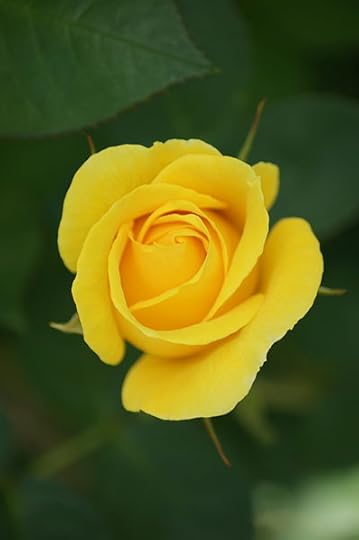
108 red roses: “Will you marry me?”
Yellow: “Let’s just be friends.”
Red, white, and pink mixed: “May God bless you.” (The three colors symbolize the Holy Trinity.)
Red and white with ivy: “We will be together forever.”
Red and white mixed: “We belong together.”
Two intertwined red roses: “I have something to ask you.” (A marriage proposal is imminent.)
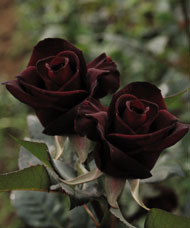 Very dark red (almost black): “My condolences.”
Very dark red (almost black): “My condolences.”
White: symbolizes innocence and purity.
White buds: “I’m too young for love.”
Red and yellow: “Let’s celebrate.”
Light pink: “You make me happy.”
Dark pink: “Thank you.”
Blue: “You’re mysterious.”
Lavender: “It was love at first sight.”
Coral: “I want you.”
Burgundy: “You’re beautiful.”
Orange: “You fascinate me.”
White tea roses with pink borders: “I must confess— I’m still in love with you.”
The post Say it with Roses appeared first on Trivia Books and Facts | Uncle John's Bathroom Reader.
May 23, 2016
The Longest Songs
While Uncle John was listening to Prince’s eight-minute-long “Purple Rain” on a loop over the weekend, he got to thinking about long songs. Really long songs.
The Longest Hit Songs
Before the late ‘60s, radio stations rarely played songs over four minutes long. It took a band as powerful as the Beatles to change that. In 1968, the group released “Hey Jude.” The 7:11 song went to #1, was the band’s biggest hit, and opened the doors for longer songs on the radio. About a decade later, Meat Loaf shattered the hit song length record with “Paradise By the Dashboard Light.” That song is 8:55. That record stood until 1991, with the release of Guns N’ Roses “November Rain,” which comes in at 8:57.
The Most Time a Song Has Been #1
On the Billboard Hot 100 (or “pop chart”), Mariah Carey and Boyz II Men’s duet “One Sweet Day” spent 16 weeks at the top from 1995 to 1996. (In second place: seven songs with 14 weeks each, including Bruno Mars’ “Uptown Funk” and Whitney Houston’s “I Will Always Love You.”)
The Hit Song With The Longest Title (Due to Legal Reasons)
In 1981, a Dutch studio act called Stars on 45 hired a bunch of studio musicians and compiled a medley of re-recorded versions of songs by the Beatles and other acts, and put a dance beat under it. It was popular in dance clubs and then hit #1 in the U.S. and other countries. But because of all the use of other people’s music, Stars on 45 was required to list the names of all the songs in the medley on album sleeves, record labels, etc. The full name of the song is “Medley: Intro Venus/Sugar Sugar/No Reply/I’ll Be Back/Drive My Car/Do You Want to Know a Secret/We Can Work It Out/ I Should Have Known Better/Nowhere Man/You’re Going to Lose That Girl/Stars on 45.” That’s 41 words.
The Hit Song With The Longest Title (When The Artist Wanted it to Be That Long)
The wry title of this 1979 top 40 hit by the country duo the Bellamy Brothers later became a cheesy pickup line: “If I Said You Had a Beautiful Body Would You Hold it Against Me?” That’s a mere 14 words.
The post The Longest Songs appeared first on Trivia Books and Facts | Uncle John's Bathroom Reader.
Moonstruck: Goodnight Moon Trivia
Our favorite childhood classics make us feel as snug as a bunny in bed. Here’s a look at what’s down the rabbit hole.
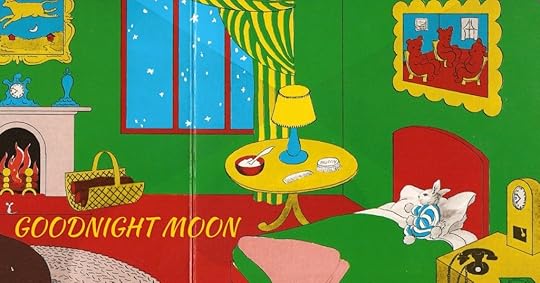
GOODNIGHT MOON
“Goodnight light and the red balloon…” Margaret Wise Brown wrote more than 100 books for children, but her most famous is Goodnight Moon, published in 1947. It was a revolutionary book in its time, inspired in part by the poetry of Gertrude Stein. More than four generations of children have nodded off to this classic’s hypnotic spell, and 11 million copies have been sold since its first printing. But in the beginning, the book’s prospects looked dim. In its first year, Moon sold a modest 6,000 copies at $1.75 each. That yielded a typical author’s royalty rate of a dime or less per book, earning Brown around $500. Sales declined from there. In 1951 Goodnight Moon sold only 1,300 copies, and there was no reason to believe that sales would ever recover. That may explain why in May the following year, Brown made a whimsical addition to her will: Upon her death, the royalties from her books would go to the three sons of her neighbors, Joan and Albert Clarke, probably figuring they’d get a few dollars a year to blow on toys and bubblegum. But that’s not how it turned out.
GOOD NEIGHBOR POLICY
The Clarke family had provided a measure of stability to Brown, who lived a bohemian life in her next-door flat, never marrying and never having kids of her own. Apparently she loved the Clarke children and allocated royalties from various books to each. Her will provided that the middle child, nine-year-old Albert, would receive 100 percent of Goodnight Moon. What happened next was completely unexpected. Four months after writing her will, while on a book tour of Europe in late 1952, the 42-year-old author suffered a coronary embolism and died.
It took a few years for Brown’s estate to be settled, and in 1957 the Clarke family learned the peculiar details of her will. In the meantime, though, the situation had already begun to change for Goodnight Moon. As parents across the country and world began telling each other about this “magic” book that put toddlers to sleep, sales grew and the publisher began issuing new printings.
The result was that Albert, now 13, learned that his share of the estate was already $17,530 (about $134,000 in today’s money) and still growing robustly. By 1970 Goodnight Moon was selling 20,000 copies a year; in the decades that followed, that number jumped into the hundreds of thousands, with total sales reaching four million in 1990.
THE PLOT THICKENS
You’d think that a story about a children’s book might have a happy ending: Perhaps Albert would use his money wisely and generously. No. In 2000 Joshua Prager tracked Albert Clarke down for the Wall Street Journal, writing that “in the intervening years, the trajectories of Ms. Brown’s book and the boy who inherited it began to diverge with strange symmetry.” Prager describes a life of squandered millions, murderous fistfights, theft, a sequence of broken homes, domestic violence, lost custody of children, clothing bought and thrown away instead of being washed, houses bought and sold at a loss, vagrancy, debt, drug abuse, and arrests on an array of charges ranging from menacing and resisting arrest to criminal possession of a weapon, criminal trespass, assault, and grand larceny. According to Prager, Albert Clarke said he believed—with no supporting evidence or corroboration from any source—that Brown was his real mother, a notion his older brother Austin characterized as “delusional thinking. It’s a fairy tale that makes him feel better.”
THE NEVER-ENDING STORY
Austin’s response is understandable: Albert’s most recent six month royalty check had been $341,000; Austin’s (for Brown’s book The Sailor Dog): $13.88. Their youngest brother Jimmy, also the recipient of small checks, had joined a cult years earlier before committing suicide in 1995. How long will this continue? Thanks to extensions of copyright laws in the 1990s, Albert or his heirs will be receiving royalties for Goodnight Moon—one of the most successful children’s books of all time—until 2043.
The post Moonstruck: Goodnight Moon Trivia appeared first on Trivia Books and Facts | Uncle John's Bathroom Reader.
May 20, 2016
Odd-o-mobiles
We were driven to write this post on unusual cars.
PHILION ROAD CARRIAGE:
One of the oldest American automobiles, patented in 1892 by showman Achille Philion. It had a 2-cylinder, 1 horsepower, steam-powered engine; had a movable steering wheel (it could go on the front or back of the car); and could reach 8 mph. The chauffeur sat in the back to maintain the steam boiler. Only one was built: It was a big hit at the 1893 Chicago World’s Fair. Want to see it? It appeared in the 1942 Orson Welles film, The Magnificent Ambersons, and now resides at the National Automobile Museum in Reno, Nevada.
AWZ P70:
This East German car looked like the typical boxy Euro-sedan from the 1950s, but the “P” in AWZ P70 stood for “plastic”— that’s what the body was made of (there was a steel embargo imposed on Soviet Bloc countries). Today it’s not unusual for cars to be made of plastic, but the P70 was one of the world’s first. (Another early plastic car: the 1953 Chevy Corvette.)
S-CARGO:
Escargot is French for “snail,” and that’s what this Nissan car/van looked like, with a tiny hood and a large, bubbleshaped body. (Nissan claimed S-Cargo stood for “small cargo.”)
Available only in Japan, about 12,000 sold between 1989 and 1992.
DYMAXION:
The brainchild of R. Buckminster Fuller, Dymaxion stood for “dynamic, maximum, and tension.” This 3-wheeled, bulletshaped car was 20 feet long, had a Ford V-8 engine driving the two front wheels, and was steered via the single rear wheel, which allowed it to turn on a dime. It had room for 11 passengers and could travel at a top speed of about 120 mph, getting an unheardof 25 to 30 mpg. And it had a periscope…instead of a rear window. A test run of the prototype at the 1933 Chicago World’s Fair resulted in a rollover, killing the driver. The crash was blamed on the steering, but many say another vehicle caused it. In any case, financial backers pulled out, and only three cars were built in 1933 and 1934. Just one exists today.
The post Odd-o-mobiles appeared first on Trivia Books and Facts | Uncle John's Bathroom Reader.

